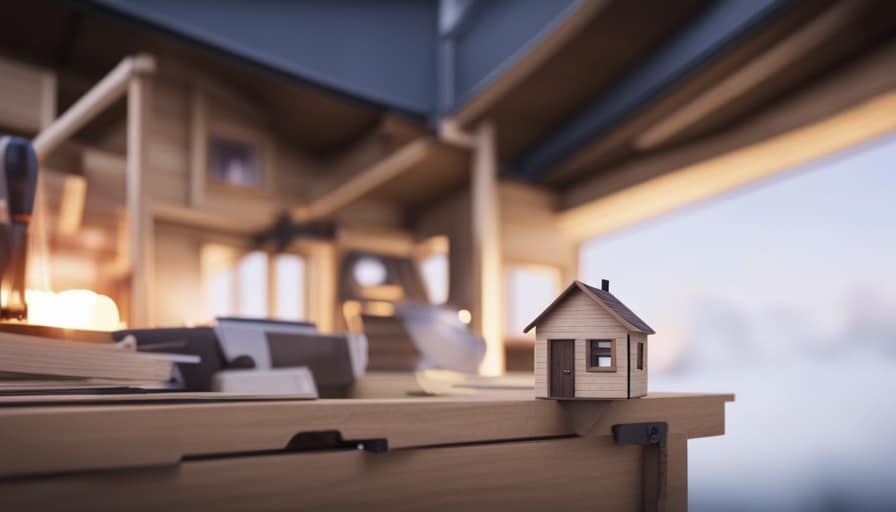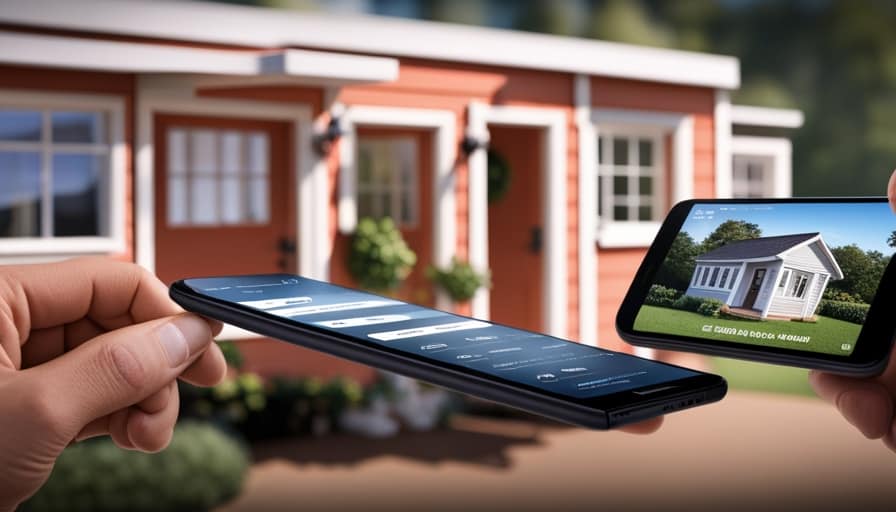Get ready to dive into the world of tiny house communities, where we, together, explore the top 10 cohorts that are living small in style.
From the Eco-Conscious Innovators to the Off-Grid Enthusiasts, these communities embody the spirit of innovation, sustainability, and creativity.
Join us as we uncover their minimalist marvels, innovative designs, and sustainable solutions.
Whether you’re seeking a tiny retreat or an urban oasis, this article is your guide to finding the perfect tiny house community that serves your desires.
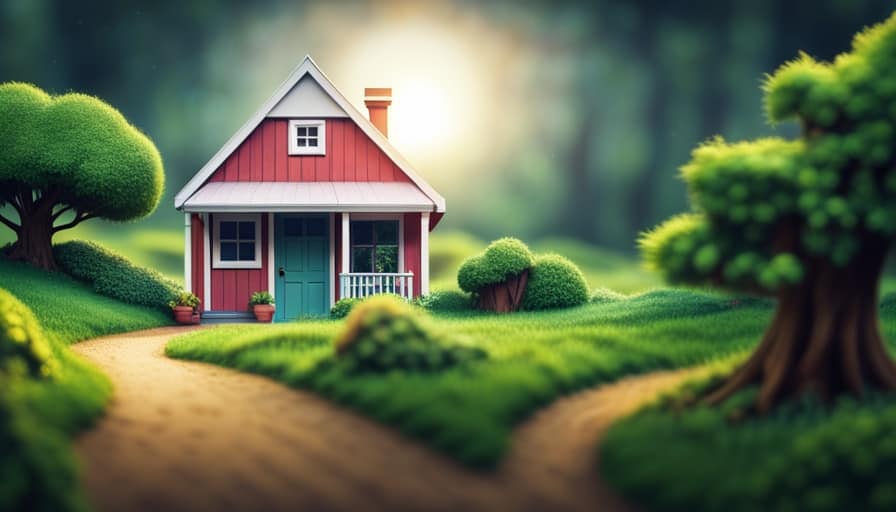
Key Takeaways
- Tiny house communities promote eco-conscious and sustainable living by utilizing sustainable materials, renewable energy systems, and water conservation techniques.
- Minimalist living and design are prioritized in tiny house communities, with an emphasis on simplicity, functionality, and clever storage solutions.
- Creative and artistic expression are encouraged in tiny house communities, with residents transforming their homes into vibrant and imaginative spaces through artistic endeavors.
- Community living and collaboration are central to tiny house communities, fostering meaningful relationships, shared resources, and a supportive environment for residents.
The Eco-Conscious Innovators
We’re excited to delve into the world of The Eco-Conscious Innovators, who are leading the way in sustainable living within tiny house communities.
These innovators are passionate about eco-friendly architecture and are dedicated to creating homes that have a minimal impact on the environment. They prioritize using sustainable materials, such as reclaimed wood and recycled materials, in their construction process.
The Eco-Conscious Innovators also focus on energy efficiency by incorporating solar panels, rainwater harvesting systems, and composting toilets into their tiny homes.
Their commitment to sustainable living extends beyond their homes as they actively participate in community gardens, promote recycling programs, and advocate for green initiatives.

The Eco-Conscious Innovators serve as an inspiration for others, showing that it’s possible to live comfortably while reducing our carbon footprint and preserving the planet for future generations.
Minimalist Marvels
The Minimalist Marvels are a group of individuals who’ve embraced the concept of living with less and have created stunning tiny homes that prioritize simplicity and functionality.
These individuals have mastered the art of minimalist interior design, creating spaces that are clean, uncluttered, and visually appealing. They understand the importance of small space organization and have implemented clever storage solutions to maximize the use of every inch.
Their homes are carefully curated with only the essentials, creating a sense of calm and tranquility. From cleverly hidden storage compartments to multi-functional furniture pieces, the Minimalist Marvels have proven that living in a small space doesn’t mean sacrificing style or comfort.
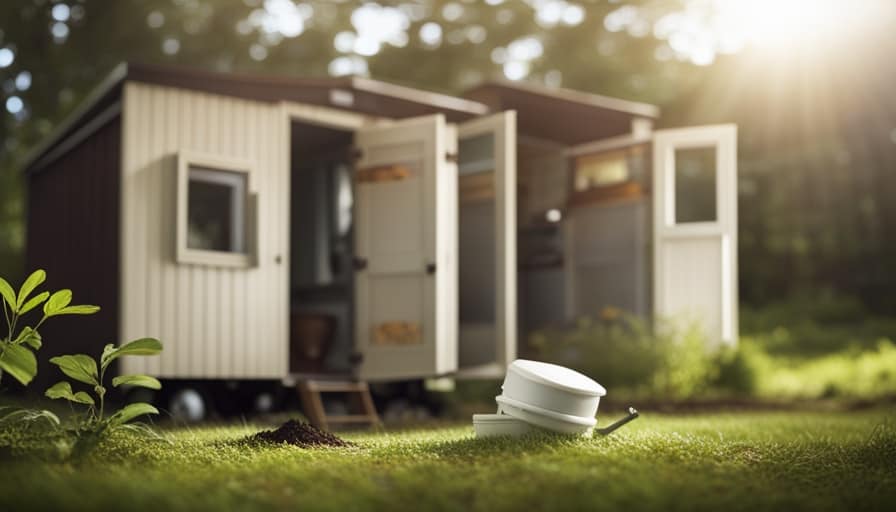
They inspire others to embrace a minimalist lifestyle and enjoy the benefits of living with less.
The Creative Collective
Combining our artistic talents and shared vision, the Creative Collective transforms tiny houses into vibrant and imaginative spaces that reflect our unique personalities. Through collaborative projects and artistic expression, we strive to create homes that are both functional and visually captivating.
In our Creative Collective, we believe that a small space should not limit our creativity. We use every nook and cranny to showcase our artistic endeavors, from hand-painted murals on the walls to intricately designed furniture pieces. Our tiny houses become canvases where we can freely express ourselves and inspire others.
To give you a glimpse of our creativity, here is a snapshot of some of our recent projects:
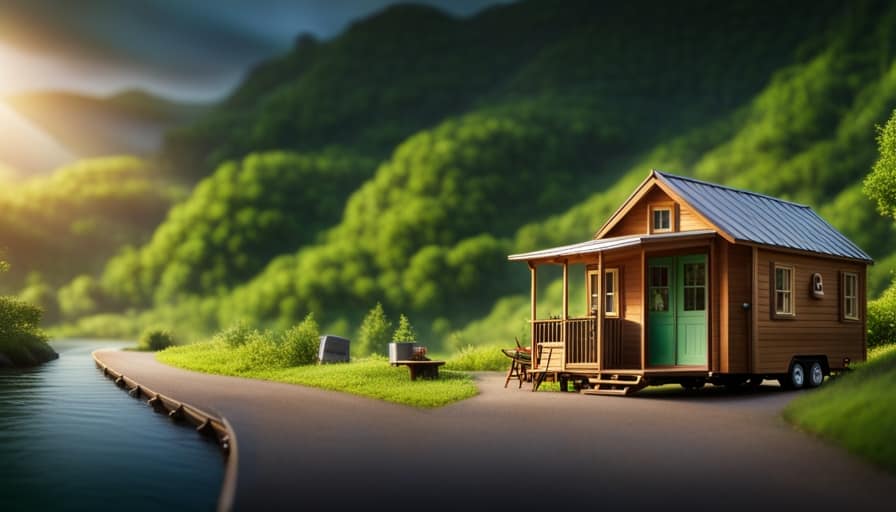
| Project | Description |
|---|---|
| Mosaic Magic | Transforming plain floors into stunning mosaic masterpieces |
| Recycled Art | Turning discarded materials into beautiful sculptures and installations |
| Nature-inspired Interiors | Incorporating natural elements like plants and reclaimed wood into our designs |
Sustainable Solutions
Reducing our environmental footprint is a priority for our Creative Collective. We actively seek sustainable solutions to minimize waste and promote eco-friendly practices. In our pursuit of sustainable living, we’ve embraced eco-friendly architecture and the use of green building materials.
Here are some of the ways in which we’re incorporating these practices into our tiny house communities:
- Implementing passive design strategies to maximize natural lighting and ventilation, reducing the need for artificial lighting and cooling systems.
- Utilizing recycled and reclaimed materials in our construction projects, reducing the demand for new resources and diverting waste from landfills.
- Incorporating renewable energy systems such as solar panels and wind turbines to power our tiny homes, reducing our reliance on fossil fuels.
- Implementing rainwater harvesting systems and greywater recycling techniques to conserve water and minimize our impact on local water supplies.
Through these sustainable practices, we aren’t only reducing our environmental impact but also creating healthier and more energy-efficient living spaces for our community members.
Modern Tiny Homes
When it comes to modern tiny homes, sustainable design solutions are at the forefront. These homes are built with eco-friendly materials and energy-efficient systems, minimizing their impact on the environment.
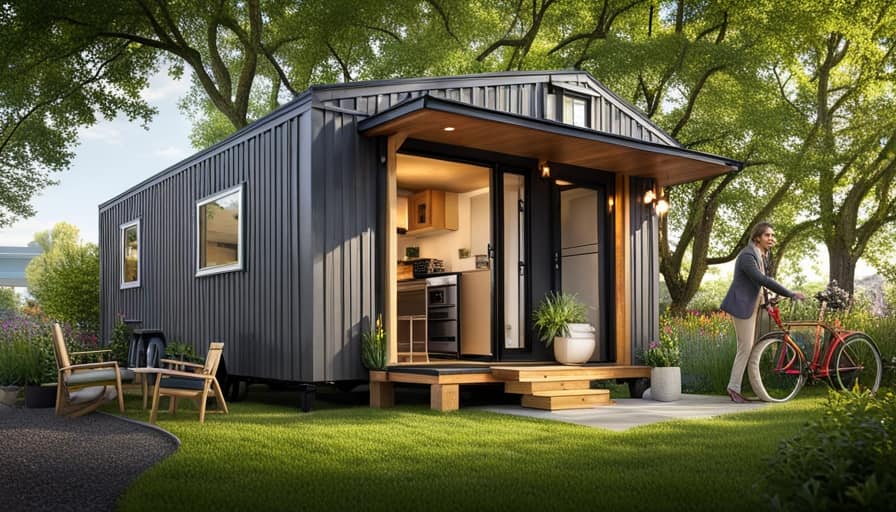
Additionally, minimalist living trends have influenced the design of these homes, focusing on simplicity and functionality. Creative space optimization techniques are also employed to make the most of every square inch, ensuring that these homes are both stylish and practical.
Sustainable Design Solutions
We can achieve a more sustainable and efficient living space by incorporating eco-friendly materials and maximizing natural light in our modern tiny homes. To ensure sustainability, green building techniques such as passive solar design and rainwater harvesting can be implemented.
Renewable materials, such as bamboo flooring and reclaimed wood, can be used for construction to minimize environmental impact. Installing energy-efficient appliances and systems, such as solar panels and LED lighting, can reduce energy consumption. Additionally, implementing proper insulation and ventilation systems can optimize energy efficiency and indoor air quality.
These sustainable design solutions not only minimize our ecological footprint but also create healthier and more comfortable living spaces. Transitioning into the subsequent section about minimalist living trends, we can explore how these sustainable design solutions align with the desire for simplicity and intentional living.

Minimalist Living Trends
Let’s explore the growing popularity of minimalist living trends in modern tiny homes and how they are reshaping our perceptions of what we truly need to live comfortably. The tiny house movement has gained momentum in recent years, with more and more people opting for smaller, more efficient living spaces. This shift towards minimalist living is not only driven by a desire to reduce environmental impact, but also by a desire to simplify and declutter our lives. Modern tiny homes are designed with a focus on maximizing space and incorporating clever storage solutions. From multi-functional furniture to creative use of vertical space, small space organization is key in making these homes functional and comfortable. By embracing minimalist living, we are redefining our priorities and finding contentment in living with less.
| Benefits of Minimalist Living in Tiny Homes | Tips for Small Space Organization | Latest Trends in Minimalist Living |
|---|---|---|
| Reduced environmental impact | Utilize vertical space | Multi-functional furniture |
| Simplified and decluttered lifestyle | Creative storage solutions | Minimalist aesthetics |
| Lower cost of living | Efficient use of every inch of space | Off-grid living |
| Greater freedom and flexibility | Minimalist color palettes | Minimalist decor and design |
Creative Space Optimization
We can maximize the limited space in modern tiny homes by incorporating creative solutions and thoughtful design. With the right storage solutions and multi-purpose furniture, every nook and cranny can be utilized efficiently.
Here are some ways to optimize space in modern tiny homes:
-
Built-in storage: Utilize vertical space by incorporating built-in shelves and cabinets. This allows for ample storage without taking up valuable floor space.
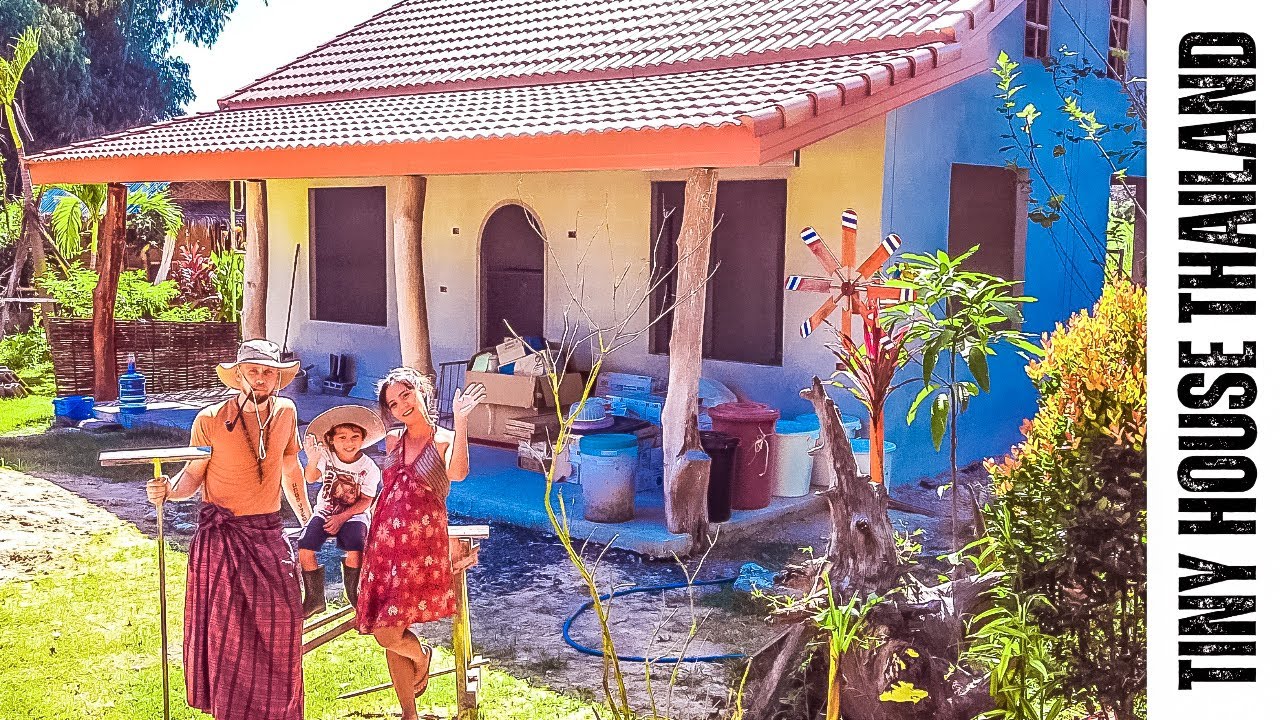
-
Loft beds: By elevating the bed area, you can create a separate sleeping space while maximizing the floor space underneath for other activities.
-
Foldable furniture: Invest in furniture that can be folded or collapsed when not in use, such as folding tables or collapsible chairs. This allows for easy storage and flexibility in space usage.
-
Modular furniture: Opt for furniture pieces that can be rearranged or transformed to serve multiple functions. For example, a sofa that can be converted into a bed or a dining table that can be extended or compacted.
Community Living at Its Finest
At the heart of community living, we find ourselves surrounded by like-minded individuals who share our values and aspirations. Community engagement is a fundamental aspect of living in a tiny house community. We come together to support and uplift one another, creating a sense of belonging and camaraderie.
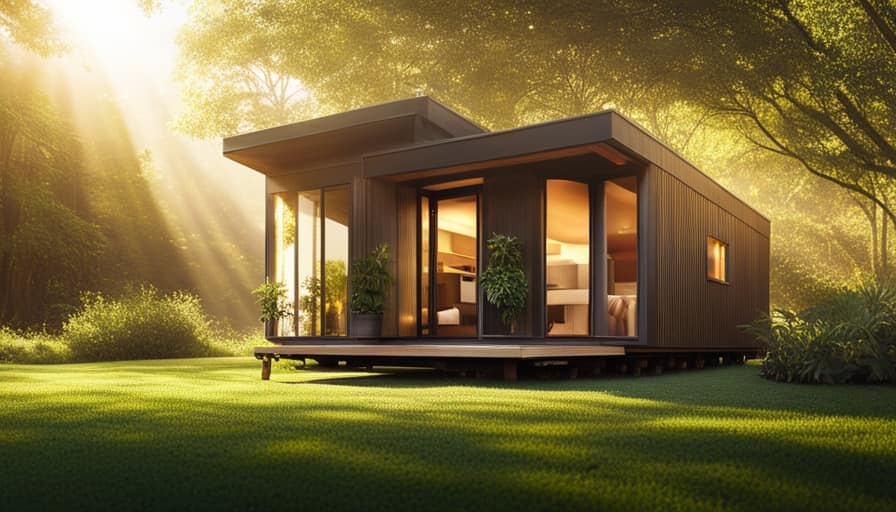
Through shared resources, we’re able to maximize the benefits of living in a small space. From communal gardens to shared laundry facilities, we pool our resources to create a sustainable and efficient living environment. This fosters a spirit of collaboration and cooperation, where everyone contributes to the well-being of the community.
Transitioning into the next section, innovative designers have played a crucial role in transforming tiny house communities into spaces that are both functional and aesthetically pleasing.
Innovative Designers
By collaborating with skilled architects and employing cutting-edge techniques, innovative designers have revolutionized the way tiny house communities are designed and constructed, allowing us to live comfortably and stylishly in our small spaces. These designers have come up with innovative space saving techniques and incorporated sustainable materials to create homes that are both functional and environmentally friendly. Here are some of the ways they’ve pushed the boundaries of design:
-
Multifunctional furniture: Cleverly designed furniture pieces that can serve multiple purposes, such as a sofa that transforms into a bed or a dining table that doubles as a workspace.
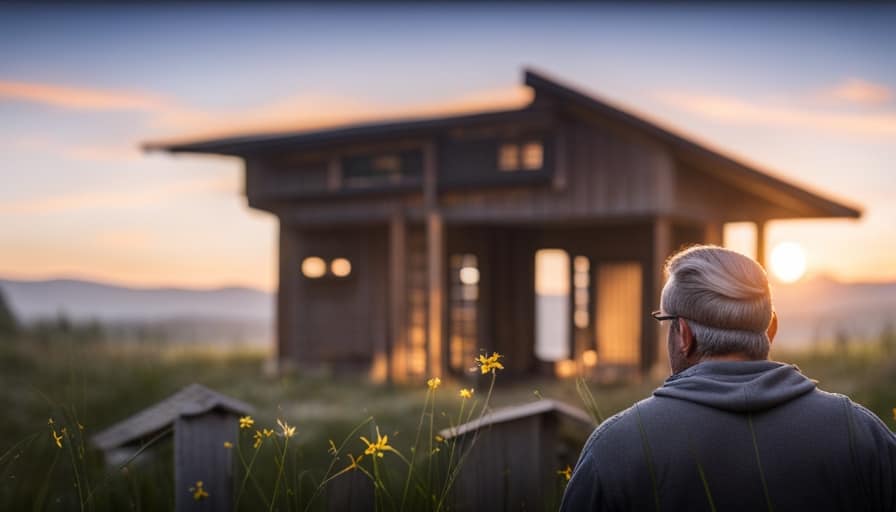
-
Lofted sleeping areas: Utilizing vertical space by incorporating lofted sleeping areas, which frees up valuable floor space for other activities.
-
Smart storage solutions: Maximizing storage options through creative solutions like hidden compartments, built-in shelves, and underfloor storage.
-
Green building materials: Using sustainable materials like reclaimed wood, bamboo, and recycled materials, which not only reduce environmental impact but also add unique aesthetics to the homes.
With the help of these innovative designers, we can now live comfortably in our tiny house communities, surrounded by smart and sustainable design. As we continue to explore the world of tiny retreats, let’s dive into the next section to discover the cozy and charming getaways that await us.
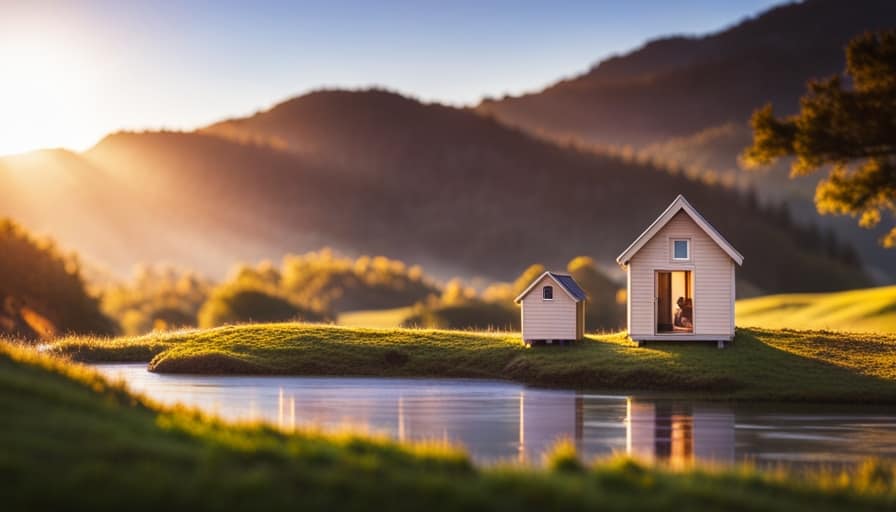
Tiny Retreats
When it comes to tiny retreats, there are both benefits and drawbacks to living in a small community.
On one hand, the close-knit nature of these communities fosters a sense of belonging and support among residents.
On the other hand, privacy and personal space can sometimes be compromised.
However, what makes tiny retreats truly special is the innovative design and efficiency of the tiny houses themselves.
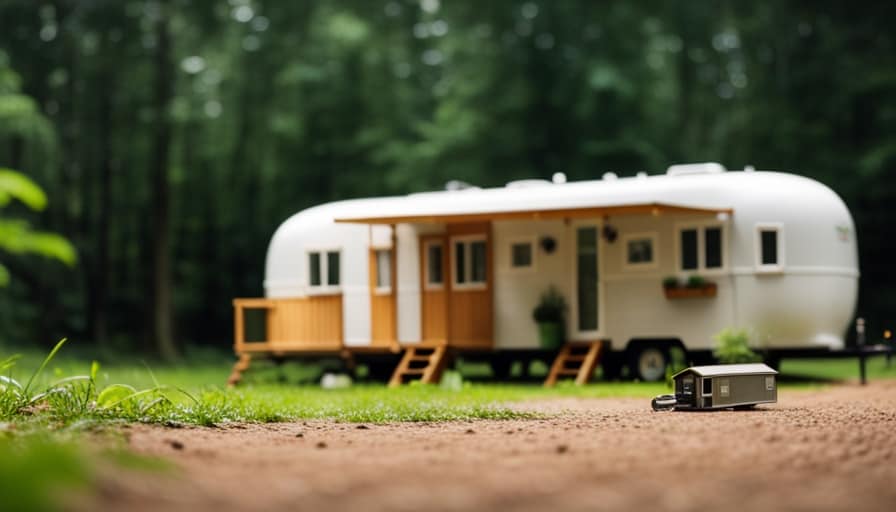
These small dwellings are often thoughtfully designed to maximize space and functionality, proving that living small can still be stylish and comfortable.
Community Benefits and Drawbacks
We love the sense of camaraderie that comes with living in a tight-knit community like a tiny retreat. Living in a tiny house community offers several benefits and drawbacks that are worth considering. Here are some key points to keep in mind:
-
Community Engagement: Tiny retreats foster a strong sense of community engagement, where residents can actively participate in shared activities and events. This promotes a sense of belonging and a supportive network of neighbors.
-
Social Dynamics: Living in close proximity to others in a tiny retreat encourages social interactions and the development of meaningful relationships. It provides an opportunity to connect with like-minded individuals who share similar values and lifestyles.
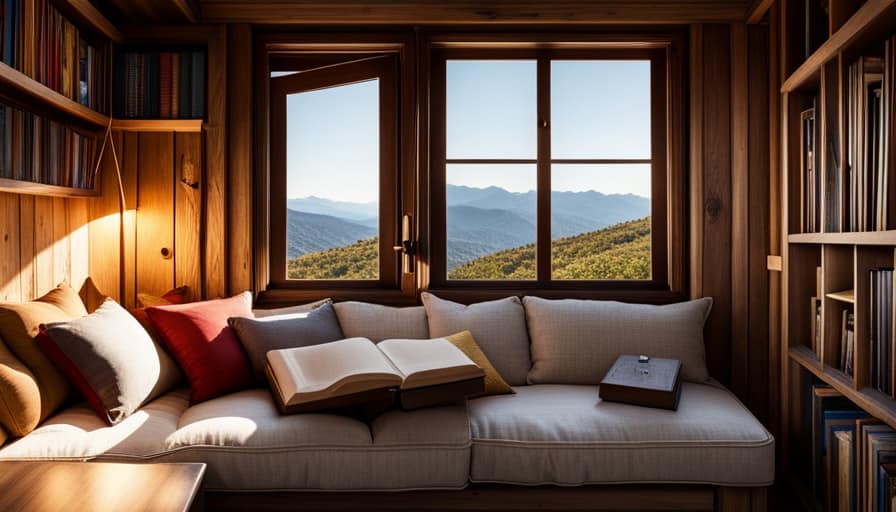
-
Shared Resources: Tiny house communities often have shared resources such as communal gardens, laundry facilities, and common spaces. This encourages cooperation and reduces individual costs.
-
Supportive Environment: Living in a tiny retreat allows residents to rely on each other for support, whether it’s borrowing tools, sharing knowledge, or providing emotional support.
Living in a tiny retreat offers numerous advantages, but it’s important to consider the potential drawbacks as well. Transitioning from a more conventional living arrangement to a tiny house community can require adjustments and compromises. However, the benefits of community living often outweigh the challenges, fostering a nurturing and supportive environment.
Moving on to the next section, let’s explore the exciting world of design innovation and efficiency in tiny house communities.

Design Innovation and Efficiency
Let’s dive into the world of design innovation and efficiency in tiny house communities, where creative solutions and space-saving techniques are embraced to maximize the functionality and comfort of these small retreats.
Compact living options have become increasingly popular as people seek to simplify their lives and reduce their environmental footprint. In these communities, every square inch is carefully considered and utilized effectively.
From multi-functional furniture to clever storage solutions, designers are constantly finding innovative ways to make the most of limited space. These tiny retreats often feature built-in storage, lofted beds, and collapsible furniture, allowing residents to have all the essentials without sacrificing comfort.
By incorporating space-saving techniques, these communities offer a unique and efficient living experience.
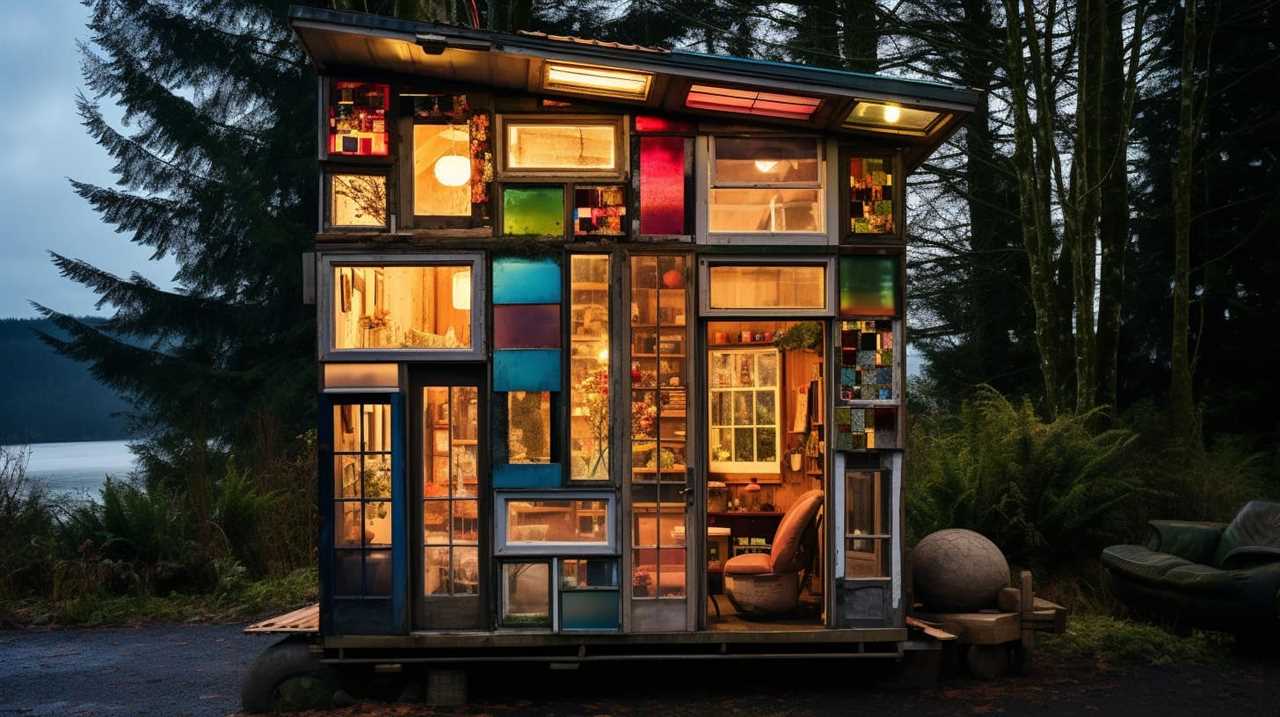
Now, let’s transition into the next section about the ‘urban oasis’.
Urban Oasis
In the heart of the bustling city, amidst the concrete jungle, we find ourselves seeking an urban oasis. A place where we can escape the noise and chaos, and reconnect with nature. Urban oasis communities offer a unique solution to the challenges of micro living in an urban environment.
Here are some key features of these communities:
-
Urban gardening: Many urban oasis communities have rooftop gardens or shared green spaces where residents can grow their own fruits, vegetables, and herbs. This not only provides a source of fresh, organic produce but also promotes sustainability and community engagement.
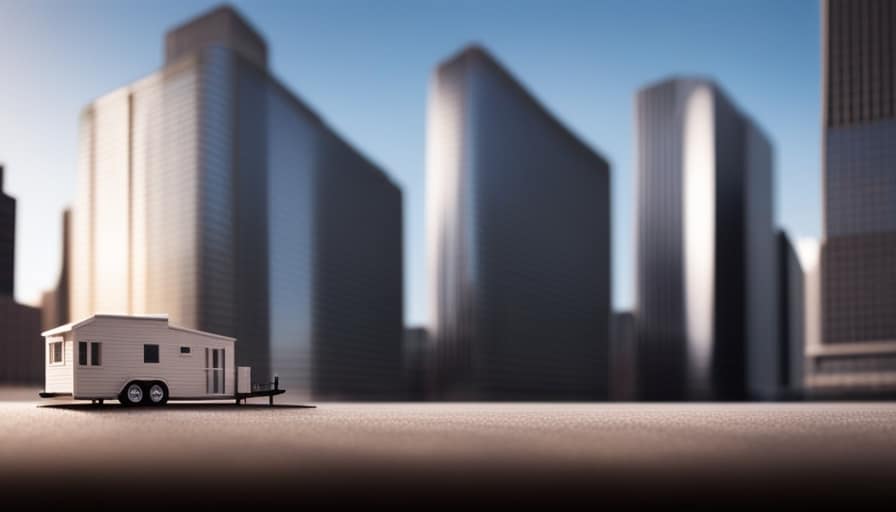
-
Community spaces: In addition to private living spaces, urban oasis communities often have communal areas where residents can come together for socializing, working, or relaxing. These spaces may include shared kitchens, libraries, rooftop terraces, or co-working spaces.
-
Wellness amenities: To promote a healthy and balanced lifestyle, urban oasis communities often offer wellness amenities such as yoga studios, fitness centers, or meditation rooms. These amenities provide residents with opportunities to prioritize their physical and mental well-being.
-
Sustainable design: Urban oasis communities are typically designed with sustainability in mind. They may incorporate features like solar panels, rainwater harvesting systems, or green roofs to reduce the ecological footprint of the community and enhance its overall sustainability.
Living in an urban oasis allows us to enjoy the benefits of city living while also providing a peaceful and nurturing environment. These communities offer a respite from the hustle and bustle of city life, providing a space where we can find solace and connection with both nature and our fellow residents.
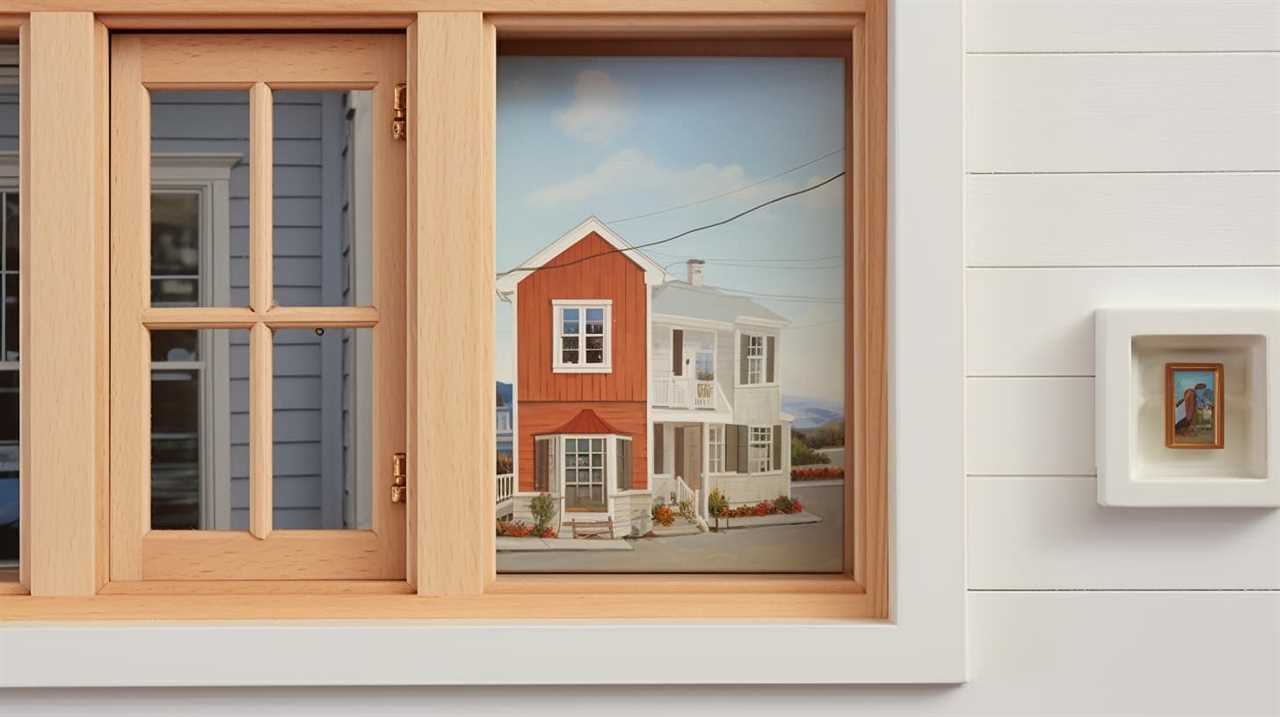
Off-Grid Enthusiasts
Off-Grid Enthusiasts are individuals who embrace sustainable energy sources and minimalist living essentials. They prioritize self-sufficiency and strive to live independently from traditional power grids.
These individuals often utilize solar panels, wind turbines, and other renewable energy technologies to meet their energy needs, while also conserving resources and minimizing their environmental impact.
Sustainable Energy Sources
We prioritize finding sustainable energy sources that can power our tiny homes efficiently. In our quest for renewable energy, we’ve embraced green technology that aligns with our commitment to minimize our environmental impact.
Here are four sustainable energy sources that we rely on in our off-grid tiny house communities:
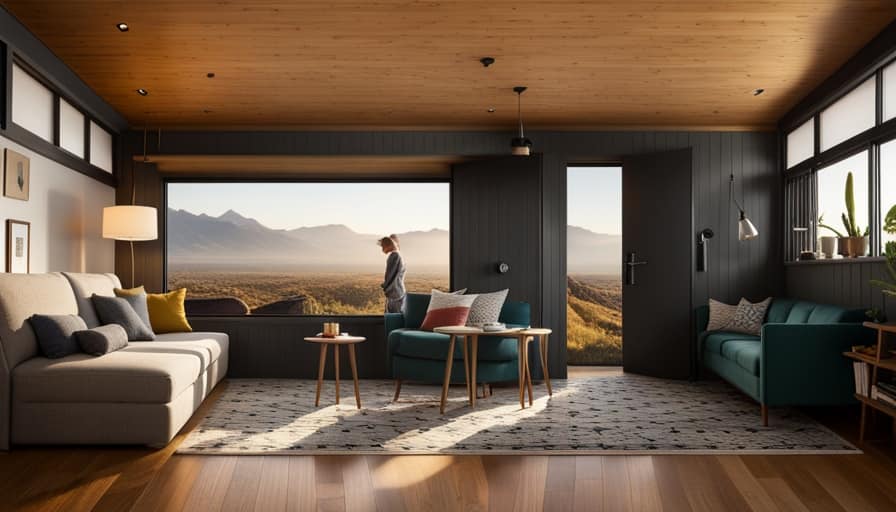
-
Solar Power: We harness the power of the sun by installing solar panels on our roofs. These panels convert sunlight into electricity, providing us with a clean and renewable energy source.
-
Wind Power: Utilizing wind turbines, we generate electricity by capturing the wind’s kinetic energy. This allows us to tap into a natural and abundant resource without producing harmful emissions.
-
Hydro Power: Some of our communities are located near rivers or streams, enabling us to utilize hydroelectric power. By capturing the energy from moving water, we generate electricity in an eco-friendly manner.
-
Biomass Energy: We make use of organic materials, such as wood pellets or agricultural waste, to produce biomass energy. Through a process called combustion, we convert these materials into heat and power, reducing our reliance on fossil fuels.
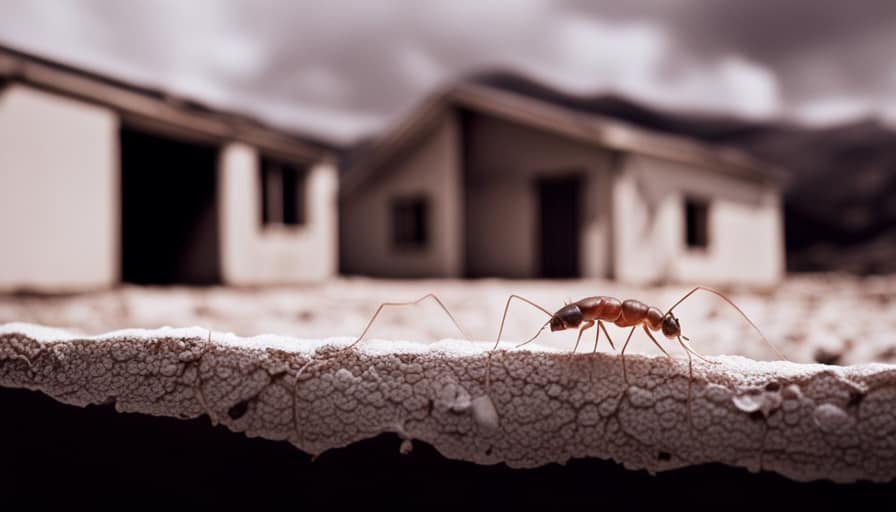
Minimalist Living Essentials
After embracing sustainable energy sources, we’ve now turned our focus to minimalist living essentials for off-grid enthusiasts.
When it comes to living in a tiny house, organization is key. Maximizing space and keeping things tidy is essential for a clutter-free environment. Utilizing storage solutions such as built-in shelving, under-bed storage, and multi-functional furniture can help optimize space in a tiny home.
Additionally, incorporating minimalist interior design principles can create a sense of openness and tranquility. Choosing a neutral color palette, utilizing natural light, and decluttering are all important aspects of minimalist design.
Frequently Asked Questions
How Much Does It Cost to Live in a Tiny House Community?
Living in a tiny house community can be cost-effective. The cost of utilities is typically lower, and financing options are available to make it more affordable. Overall, it’s a great way to live small in style.

What Are the Legal Requirements for Living in a Tiny House Community?
Legal rights for tiny house residents can vary depending on local zoning regulations. Understanding potential challenges and seeking legal advice can help navigate these requirements. It’s important to research and comply with applicable laws to ensure a smooth transition into a tiny house community.
Are There Any Restrictions on the Size or Design of Tiny Homes in These Communities?
Are there any size restrictions or design regulations for tiny homes in these communities? We’ve researched the top 10 cohorts of tiny house communities and found that some do have limitations, while others offer more flexibility.
How Do Tiny House Communities Handle Waste Management and Recycling?
In tiny house communities, waste management and recycling are often handled through sustainable practices. Composting toilets are commonly used to minimize water usage and promote eco-friendly waste disposal.
What Amenities and Services Are Typically Available in a Tiny House Community?
In tiny house communities, amenities and services typically include social activities and transportation options. Residents can enjoy gatherings, events, and recreational facilities, as well as convenient access to public transportation and shared bikes or cars.
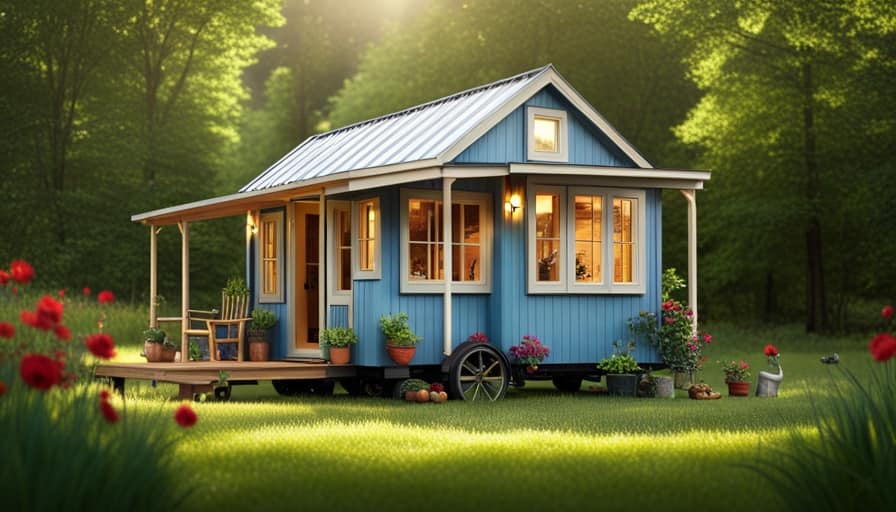
Conclusion
In conclusion, these top 10 cohorts of tiny house communities are like a vibrant tapestry woven together with diverse threads of eco-consciousness, minimalism, creativity, sustainability, modernity, innovation, retreats, urban harmony, and off-grid living.
Each community stands as a testament to the power of living small in style, showcasing the endless possibilities and benefits that come with embracing a simpler, more intentional way of life.
Whether it’s for the love of the environment, artistic expression, or seeking a sense of freedom, these communities offer a unique and inspiring experience for those who dare to live outside the box.
I’m Theodore, and I love tiny houses. In fact, I’m the author of Tiny House 43, a book about tiny houses that are also tree houses. I think they’re magical places where imaginations can run wild and adventures are just waiting to happen.
While tree houses are often associated with childhood, they can be the perfect adult retreat. They offer a cozy space to relax and unwind, surrounded by nature. And since they’re typically built on stilts or raised platforms, they offer stunning views that traditional homes simply can’t match.
If you’re looking for a unique and romantic getaway, a tree house tiny house might just be the perfect option.
